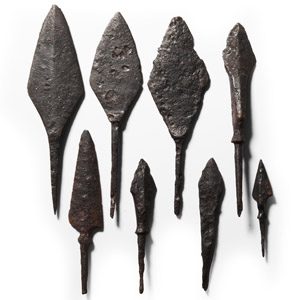Home > Auctions > 23 - 27 May 2023
Ancient Art, Antiquities, Natural History & Coins
Auction Highlights:
The Kusmirek Collection, UK.
The Kusmirek Collection, UK.
Acquired in the 1990s. From an important English collection.
Acquired 1971-1972.
From the collection of the vendor's father.
Property of a London, UK, collector.
See Wilkins, A., Roman Imperial Artillery, Solway Print, 2017.
The operation of the onager (Latin for 'wild ass') is first mentioned in 353 A.D. by Ammianus Marcellinus in his Res Gestae and more fully in Vegetius's Epitoma Rei Militaris probably written in the reign of Emperor Theodosius I (378-395 A.D.).
Property of a Luton, UK gentleman, by inheritance.
See Capwell, T., Knives, Daggers and Bayonets, Lorenz, 2009, p.190, for general type and details.
The Type 62 is a re-badged British Pattern 1907 bayonet. Siam purchased 10,000 SMLE rifles and Pattern 1907 bayonets from Britain in 1919 to equip the 'Wild Tiger Corps', royal bodyguard of Vajiravudh, King Rama VI (reigned 1910–1925). The tiger figural on the ricasso is representative of the Wild Tiger Corps. Year 2462 on the Buddhist Calendar corresponds to 1919. SMLE rifles and Pattern 1907 bayonets were taken from British stocks, refurbished by Birmingham Small Arms (BSA), and remarked with Siamese markings. The bayonets were shipped with standard steel-mounted leather scabbards. However, the leather rapidly deteriorated in the tropical climate, so the Siamese made a replacement steel scabbard body to which the original steel mounts were brazed.
Private UK collection, 1980s.
Ex London gallery.
Cf. Christie's, The Axel Guttmann Collection of Ancient Arms and Armour, part 2, London, 2004, p.36, no.40; cf. Khorasani, M.M., Arms and Armour from Iran. The Bronze Age to the End of the Qajar Period, Tübingen, 2006, p.630, no.280.
The spearhead belongs to a typology of spears widespread in the Marlik region, which Negahban divided into two categories. This spearhead belongs to type I, spearheads with long blades, broad midrib, rectangular sectioned tang and reinforced shaft opening to reveal the tang and rounded shoulders.
Family collection, acquired 1980-2015.
Ex property of a North London gentleman.
Accompanied by an academic paper by military specialist Dr Raffaele D'Amato, dated 15 July 2019 and titled 'Eastern Roman Empire - Greek Fire Bomb or Hand Grenade (μεσαίον kακάβιον) 9th-11th century AD'.
Cf. Arendt, W. I., Granaten des 13-14. Jahrhunderts, die an der Wolga gefunden sind, Zeitschrift fur Historische Waffen-und Kostumkunde, 11 (1926-8), p.42; cf. Arendt, W., Die Spharisch-konischen Gefasse aus Gebranntem Ton, ibid; cf. Ayalon, D., Gunpowder and Firearms in the Mamluk Kingdom, London, 1956, p.16.
Apart from the use of siphons or manual flame-throwers called cheirosiphona, special corps of Roman soldiers employed terracotta grenades, in the form of small jars, abundantly evidenced in archaeological excavations. Such were the γανωτα, vessels (sometimes also of bronze) used for Greek fire. They were called μεσαία kακαβιά or κυτροκακάβια where the former had a bulbous shape and the latter a more cylindrical form.
Acquired from Czerny's Auctions, Italy, 2016, lot 280.
The Kusmirek Collection, UK.
Accompanied by a copy of Czerny's invoice and listing.
Ex German collection, Cologne, 1980-1990s.
Cf. Christie's, The Axel Guttmann Collection of Ancient Arms and Armour, part 1, London, 2002, p.34, no.31.
This tanged bronze blade from Luristan belongs to a category of Luristan swords still in use in Achaemenid Period, as proved from a blade with a perished handle (probably bone or wood) of the same type, in the National Museum of Iran (2694/15633). Examples without inscriptions like our model have been classified by Grotkamp-Schepers in the Solingen Museum as pieces from Luristan.
From an English collection, acquired 1990s.
The Kusmirek Collection, UK.
Acquired in the late 1980s.
The Kusmirek Collection, UK.
Cf. Bishop, M.C. & Coulston, J.C.N., Roman military equipment, from the Punic wars to the fall of Rome, London, 2006, p.139, fig.84.2, for similar.
A new form of rigid scale-armour, typified by pieces found in Britannia (Corbridge, Carlisle), Pannonia (Musov), Moesia (Iron Gates) and in various other provinces of the empire, was introduced earlier in the Antonine Period, and continued for all of the 3rd and 4th centuries A.D. The new body protection was realised with scales attached by wire to each of their four neighbouring scales. These new scales tended to be not only very small, but also long and slender and needed to be carefully shaped around the neck.
Acquired on the German art market, before 2000.
Ex German collection.
The Kusmirek Collection, UK.
829 - 840 of 2508 LOTS

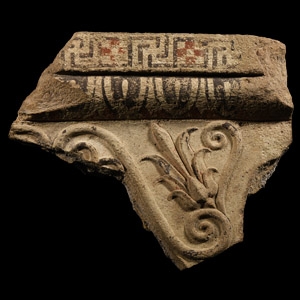
.jpg)


.jpg)
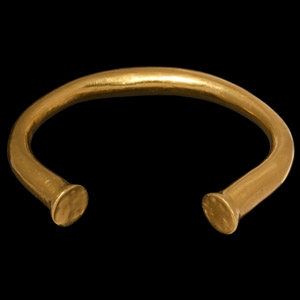
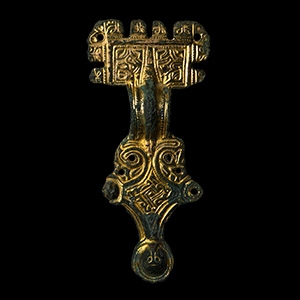

.jpg)
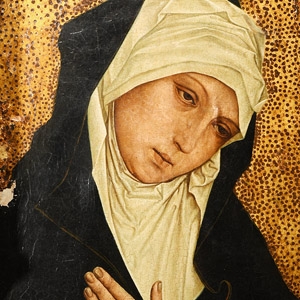

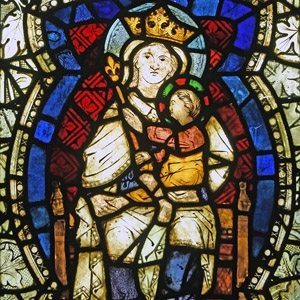
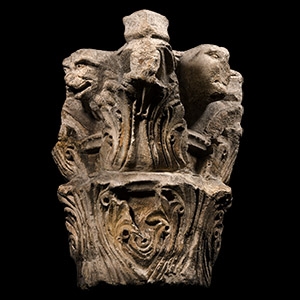
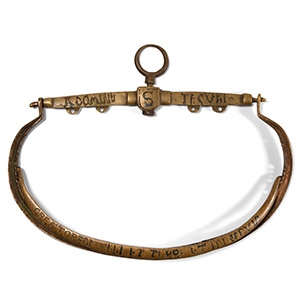
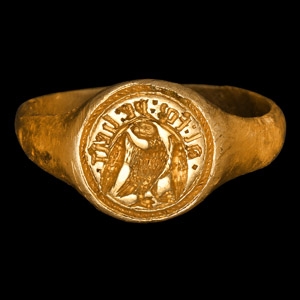
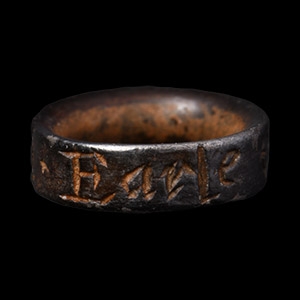
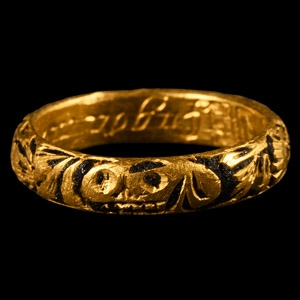
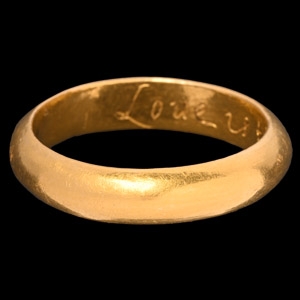
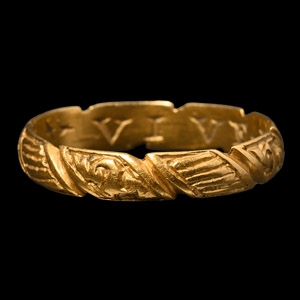
![English Milled Coins - George VI - 1937 - Cased RM Proof Coronation Gold Set [4] English Milled Coins - George VI - 1937 - Cased RM Proof Coronation Gold Set [4]](https://timelineauctions.com/upload/images/items/small/203351-s(2).jpg)
.jpg)


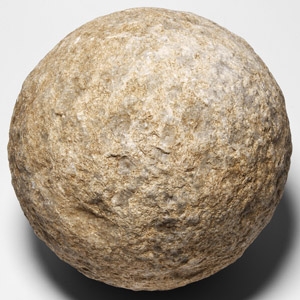
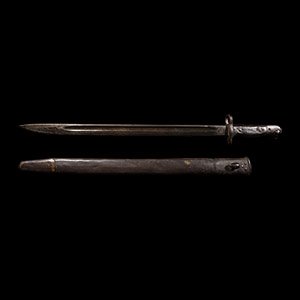
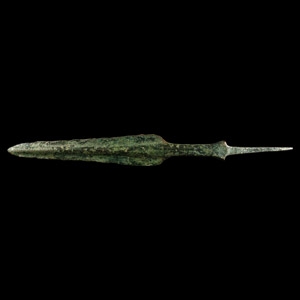
.jpg)
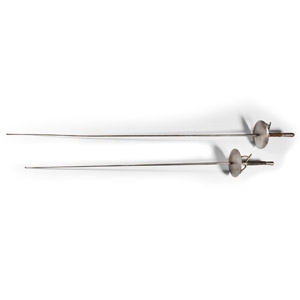
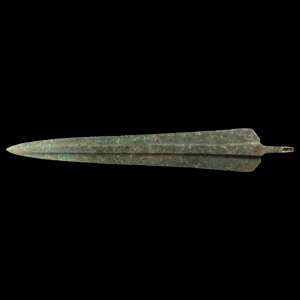
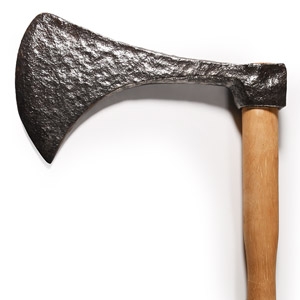
.jpg)
